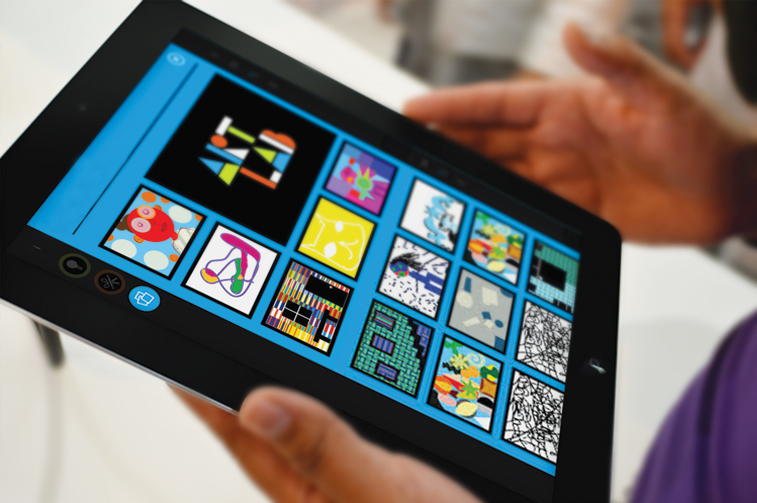Prepare learners to become effective problem solvers
by Anna Bettina Pangalangan

An approach that has been gaining traction within the academe is design thinking. Abi Mapua, a professor at De La Salle College of Saint Benilde and the director of the school’s Hub of Innovation for Inclusion (HIFI), explains how the method can spur innovation in the classroom..
Taking students through the design thinking process
1. Empathize. In this step, students are encouraged to look, listen, and learn. “As a teacher, you would really put a high value on this one because the understanding of context and problems really come out from listening to people, and looking at scenarios and circumstances,” Mapua says.
2. Define. This is when students generate insights for all the data that have been collected. Data are narrowed down to make way for problem identification.

1. Empathize. In this step, students are encouraged to look, listen, and learn. “As a teacher, you would really put a high value on this one because the understanding of context and problems really come out from listening to people, and looking at scenarios and circumstances,” Mapua says.
2. Define. This is when students generate insights for all the data that have been collected. Data are narrowed down to make way for problem identification.

3. Ideation. At this stage, students produce or “go crazy” with ideas. Mapua advises that students be given leeway to just jot down as many ideas as possible to solve the problem. “Don’t hold anything back, generate as many solutions, as many ideas as possible,” she adds.
4. Prototype. Combine ideas to build a model, a product or process design; make it tangible if possible. For strategies, you may use role playing, videos, or the use of scrap materials that can be easily manipulated.
5. Testing. Students now try out their prototype with their target audience to get feedback, and to know what they need tooimprove.
4. Prototype. Combine ideas to build a model, a product or process design; make it tangible if possible. For strategies, you may use role playing, videos, or the use of scrap materials that can be easily manipulated.
5. Testing. Students now try out their prototype with their target audience to get feedback, and to know what they need tooimprove.
For both visual and traditional learners
Mapua says that design thinking sharpens the emotional intelligence of learners, helping them lead a productive life in the future. “Design thinking, in more ways than one, simulates real life,” she says. Here are some values students can develop through design thinking:
Design thinking can really simplify concepts, so anyone can use it. It encourages active learning because it has the features of prototyping and creating. “If you are a visual learner you will benefit from using design thinking, because you need to touch and to hold tangible things to learn.” Mapua enthuses. “Traditional learners will also thrive in design thinking because it involves reading and researching.”
A means to develop valuesMapua says that design thinking sharpens the emotional intelligence of learners, helping them lead a productive life in the future. “Design thinking, in more ways than one, simulates real life,” she says. Here are some values students can develop through design thinking:

1. Listening. “You won’t thrive in life if you do not know how to listen, to work well with others, and to adjust,” Mapua shares. Design thinking prepares learners for the chaotic work life.
2. Working in teams. Most of the time, design thinking is about collaboration, an essential skill learners need to possess in order to be successful in the 21st century.
3. Creativity. The premise of design thinking is that everyone can be creative, meaning it can be used in various fields: business, science, mathematics, and civic and social subjects.
2. Working in teams. Most of the time, design thinking is about collaboration, an essential skill learners need to possess in order to be successful in the 21st century.
3. Creativity. The premise of design thinking is that everyone can be creative, meaning it can be used in various fields: business, science, mathematics, and civic and social subjects.
Tools for design thinking
The materials for design thinking are far from expensive. In prototyping, Mapua uses scrap materials. For empathy, simple post-it notes, markers, and pencils. There are also maker spaces, hubs where students are encouraged to create. “A lot of tools right now are pushing students to innovate. And the only way for them to innovate is if they can create or implement or build their ideas,” she says.
Mapua stresses the importance of being up-to-date with new things and not losing curiosity. “Teachers cannot give what they do not have. They have to constantly learn. They should be the most curious people so that they always have something exciting to share in the classroom,” Mapua says.
The materials for design thinking are far from expensive. In prototyping, Mapua uses scrap materials. For empathy, simple post-it notes, markers, and pencils. There are also maker spaces, hubs where students are encouraged to create. “A lot of tools right now are pushing students to innovate. And the only way for them to innovate is if they can create or implement or build their ideas,” she says.
Mapua stresses the importance of being up-to-date with new things and not losing curiosity. “Teachers cannot give what they do not have. They have to constantly learn. They should be the most curious people so that they always have something exciting to share in the classroom,” Mapua says.
Previous Issues







